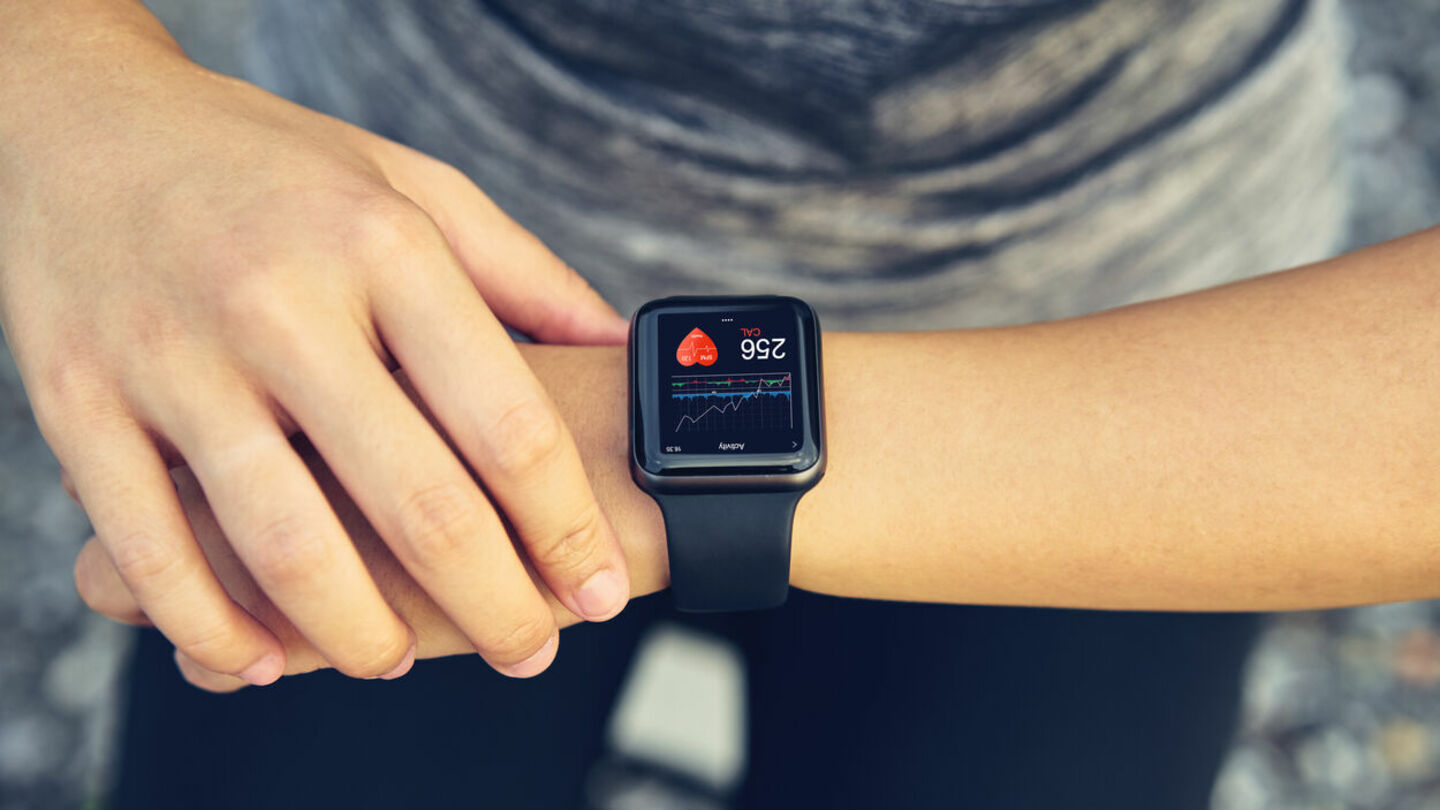
Prof Talk | Can wearables improve our wellbeing?
TU/e researcher Joyce Westerink on how wearable technology can influence our behavior
Technology plays an increasing role in how we feel and how we understand our bodies. TU/e professor Joyce Westerink investigates how wearable technology – such as smartwatches and activity trackers – can help improve our mental wellbeing.
“My expertise is psychophysiology, meaning the physiology associated with our mental wellbeing,” says Joyce Westerink, TU/e professor and researcher at the Human-Technology Interaction research group and at Philips. “I study changes in physiological processes in the body and how these are related to changes in how we feel.”
An important development within this field is the rise of wearables: small, smart devices we wear on our wrists or ankles, for example, which collect data about our sleep, activity, and physiological characteristics such as our heart rate. Examples include smartwatches and fitness trackers, which can measure physiological signals, potentially providing insight into a person’s state of mind.
What do physiological measurements indicate?
But interpreting that data isn’t always straightforward. “If you measure a change in heart rate, it could be due to stress, but it could also mean that you just exercised or that it’s too hot,” Westerink explains. As a result, it’s not easy to draw conclusions about a person’s mental state based on physiological measurements. “There are always external factors at play, such as physical activity or environmental influences,” she explains. “So we have to pay close attention to how we factor those in, how we use the technology, and how we interpret the data.”
Ultimately, the goal is to use wearables in ways that improve our wellbeing. By better understanding which physiological signals are related to mental processes, we can develop technology that not only measures, but also helps reduce stress or – for example – increase our awareness of our own wellbeing.
Fight or flight
To properly understand psychophysiological processes, it’s essential to know how our nervous system works, Westerink emphasizes. The nervous system is divided into two parts: the somatic nervous system and the autonomic nervous system. The somatic nervous system is under our control, allowing us to move our bodies by controlling our muscles.
The autonomic nervous system, on the other hand, regulates important processes without our conscious thought, such as heart rate, breathing, and digestion. “You don’t have to think about it; the system takes care of it,” Westerink says. Although that regulation happens automatically, it’s influenced by how we feel. Emotions processed in the brain control the autonomic system, resulting in changes in heart rate or breathing, for example.
Part of our autonomic nervous system – the sympathetic nervous system, also known as the ‘fight or flight’ system – helps us respond to danger. “If there’s a lion in front of you, you must be able to run away,” Westerink explains. The system then automatically takes over control of your physiology: your heart rate speeds up, you get more energy, and unnecessary processes such as digestion are temporarily shut down. This automatic response to threat – in which the body prepares for action at lightning speed – is called a stress response.
There may not be lions running around anymore, but we still have to deal with demanding managers and endless deadlines
Prolonged stress
Stress has an important function, Westerink emphasizes. It is our system’s natural response to challenging situations. The problem is that we end up in stressful situations too often in our daily lives. “There may not be lions running around anymore, but we still have to deal with demanding managers and endless deadlines. Spend five days a week like that and it’s just as big a drain on your system.”
When stress persists too often and for too long, our bodies aren’t given enough time to recover. “At some point, we don’t return to a state of rest. Our system slowly begins to change until it stops functioning properly due to that prolonged stress,” Westerink explains.
Wearables can measure physiological responses that may indicate stress, such as increased heart rate or altered skin conductance. When you experience stress, your body produces sweat, which changes skin conductance – even if the fluid is still in the sweat ducts and not yet visible on the skin. By measuring these responses, we gain insight into when and how often we experience stress.
From insights to suggestions
How can we put the data collected by wearables to practical use? “Knowledge is power,” Joyce Westerink says with conviction. “We can feed measurements back to people, giving them insight into their stress levels. That information alone can often be enough to adjust their behavior or working methods.”
But Westerink sees even more possibilities. “We can go a step further. With apps linked to these smart devices, we can make timely suggestions. Which makes it just that little bit easier for people to take action.” She points to the progress made thanks to fitness and activity trackers, which have already taken things a step further than apps that focus on stress measurements. “Occasional stress measurements do take place, but we’re not really working on apps that actually suggest to users what they can do with that data.”
Most stressful moments
Westerink explains how stress measurements linked to a calendar can help. “Imagine collecting data over a longer period of time. This allows you to see which moments in your work or personal life are most stressful, for example recurring meetings or certain parts of the day. Based on that, we can make suggestions. For example: Tuesday afternoon is much more stressful than Wednesday morning, so you could change your schedule around. Or the app might suggest taking a short walk or doing a breathing exercise.”
One study looked at how stress measurements can be useful in mental healthcare. “These would give a therapist additional information about the client, the physiological signals at that very moment,” the researcher explains. For example, the therapist can see how stressful it is for a client when they tell a particular story. “The idea is still relatively new, but it could potentially offer an extra layer of information, especially when conversations are on-screen rather than in-person.”
A simple reward, such as a check mark or confetti on the screen, can motivate people to modify their behavior
Wearables and behavior change
“The interesting thing is that the presence of a wearable can influence your behavior, even it’s just because you know something is being measured,” Westerink says. “If you see how many steps you take, you tend to do your best and take more steps.” But it’s not yet clear how long that effect lasts. “If it only lasts for a few weeks, it might not have enough of an impact on your long-term health.”
Wearables can also help improve health, including for people in lower social classes, in order to narrow the well-known ‘health gap’, Westerink says. “This seems to be feasible. A simple reward, such as a check mark or confetti on the screen, can motivate people to modify their behavior. It’s all about rewarding the behavior you want to see.” She also refers to another study that tested the effect of different types of messages users received through an app. “Some people respond better to certain messages. This can help encourage healthy behaviors, such as taking more steps, eating healthier, or sleeping better.”
From wearables to insideables
Westerink expects the technology to go a step further in the future, with so-called ‘insideables’. “With small implants we can collect even more physiological data. We could, for example, identify positive and negative emotions by measuring subtle movements in the muscles used for laughing. But whether people actually want to take that step also depends, of course, on how useful it is to them.”
According to her, wearables are already valuable in that they achieve lifestyle changes. “In a nutshell, they help us adjust our behavior and reach our goals,” she says. In the future, she sees technology playing an increasing role in our mental wellbeing and stress-related issues, with potential applications in mental healthcare. “We’re still at the beginning, but the potential is there.”


Discussion